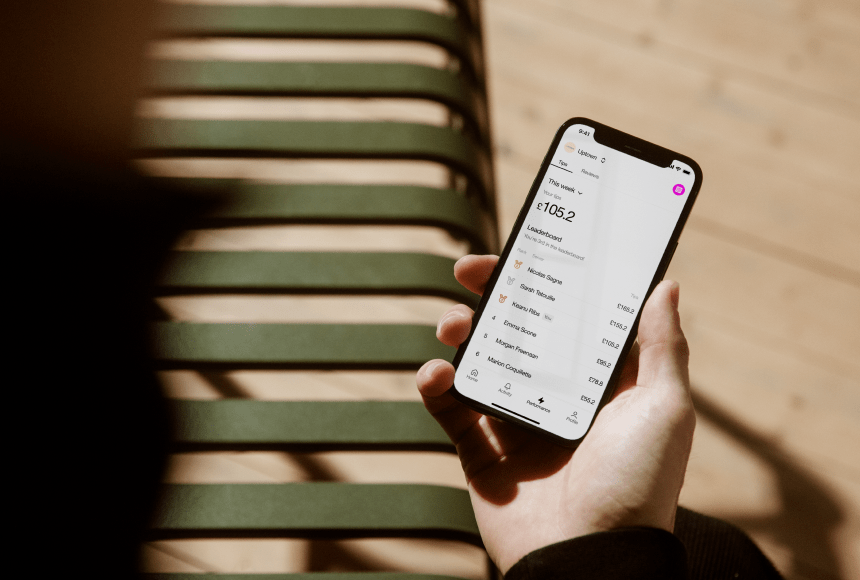
Boosting Gratuities in a Modern Dining World: Practical Steps for Restaurant Owners
Why Digital Solutions Can Help Raise Tip Amounts
These days, restaurant operations aren’t just about good food and friendly service. Technology has woven itself into almost every aspect of the dining experience, from ordering apps to automated marketing. Yet, one area that doesn’t always get the attention it deserves is tipping. Tips have long been a key income supplement for hospitality staff. Now, with the right digital tools, owners can create a seamless path for customers to express gratitude—leading to happier staff and improved morale. According to data from UKHospitality, contactless and digital ordering has been steadily growing in the UK, opening up fresh opportunities to make the tipping process more intuitive and, crucially, more lucrative.
In this article, we’ll explore how digitising the customer journey—from the moment diners peruse the menu to the second they pay—can help nudge up the average tip. You don’t need to compromise authenticity or burden your guests with pushy upselling. Instead, by leveraging thoughtful digital design and frictionless payment processes, you can build a better experience that naturally inspires diners to reward your staff for a job well done.
1. Simplify the Payment Flow for Greater Comfort
If there’s one truth about tipping, it’s that convenience matters. Diners are more likely to leave a gratuity if it feels quick, transparent, and optional rather than a chore. That’s why digitising the payment stage can have a direct impact on tips. Using a system such as sunday, for instance, diners simply scan a QR code and pay at their leisure—no waiting for a card machine, no frantic staff searching for the correct table tab. From the comfort of their phone, a discreet tip prompt can appear right at checkout.
- No awkward waiting: Without the stress of a delayed bill, diners stay in a friendly mood, more open to leaving a tip. In busy or cramped venues, cutting out that final wait can significantly improve their overall impression.
- Automatic suggestions: It’s not about forcing diners to tip, but offering default percentages (like 10%, 12.5%, or 15%) provides a gentle nudge. If the experience was excellent, many will pick a recommended percentage rather than skipping it altogether.
- Transparency and control: Digital payment systems can highlight where the tip goes—often emphasising that tips benefit front-line staff. This clarity encourages generosity, as customers understand the positive impact of a small extra contribution.
For your servers, more tips mean better morale. For your diners, a streamlined pay-and-tip option means less hassle. This synergy can form a backbone for a more satisfying, and more profitable, service experience.
2. Highlight Personal Connections in a Digital World
One fear about digital technology is that it might depersonalise the relationship between customers and staff. However, if used with nuance, digitisation can reinforce the human touch rather than undermine it. Rather than losing the emotional spark that leads to tips, you can emphasise it by using digital features effectively.
- Staff profiles: Some online ordering or payment platforms let you display short staff bios or photos. A quick snapshot of “Your server, Lucy, is a local coffee connoisseur and has worked here for 2 years” can humanise the interaction. It gives diners a sense of who’s serving them, fostering empathy that often translates into a higher tip.
- Dish stories: Another approach is weaving personal anecdotes about dishes. For example: “Our family’s marinade recipe for these BBQ wings, perfected over 30 years.” This digital detail underscores the care you put into your offerings, making guests more inclined to reward that care financially.
- Thank-you messages: After a diner leaves a tip via a contactless or phone-based system, you can display a short note from the team: “Thanks so much for your support! We appreciate you choosing us tonight.” This small personal acknowledgement can deepen the positive feeling that leads to repeat visits—and tips.
Ultimately, digitisation shouldn’t be a barrier to warmth. By thoughtfully layering in small personal touches, your staff can enjoy the best of both worlds: efficiency plus genuine connection with customers.
3. Make Menu Navigation Easy to Upsell
An often overlooked factor in tip sizes is the total bill. Typically, the higher the tab, the higher the tip amount (assuming diners tip by percentage). But pushing guests to order more can backfire if done clumsily. Instead, let a digital menu structure gently guide them toward exploring your full range of offerings.
- Suggested add-ons: When a guest taps on a main course, a digital platform can automatically display recommended sides, cocktails, or even dessert pairings. Placing them contextually, at the moment of decision, encourages a more organic upsell.
- Prominent daily specials: If your chef’s special has higher margins, spotlight it at the top of your digital menu or highlight it with an eye-catching badge. Diners are likely to notice it first, raising the overall transaction value if they order it.
- Easy multi-course ordering: A digital interface can group dishes into “starter + main” or “main + dessert” combos, reminding guests that your meal can be more than a single plate. These subtle bundling tactics elevate the average spend and, in turn, the tip.
Guests appreciate clarity, so keep the layout simple, with short descriptions and tidy categories. If diners find exactly what they want without confusion, the sense of satisfaction can translate into bigger tips—and a higher likelihood they’ll return soon.
4. Transparency on Tip Distribution
Modern diners increasingly care about where their money goes. If someone leaves a tip, does it go straight to the server, get pooled among the team, or vanish into the restaurant’s revenue? A lack of clarity might deter tipping, especially as controversies about service charges occasionally make headlines.
- Disclose your policy: A short statement like “All tips go directly to staff” or “We share tips equally between our team members” at checkout goes a long way. Digital solutions can show this message just before the tipping prompt, reassuring guests that their generosity reaches the people who served them.
- Different tip categories: Some systems let diners direct their tip to a specific staff member or choose from a few tip pools (kitchen vs. front-of-house, for example). This fosters a sense of control for the guest—and can boost the overall amount.
In essence, more transparency often equals more trust, which fosters a willingness to tip. If you tie that trust with a smooth digital experience, diners will be less hesitant to add that extra 10–15% or more to their bill.
5. Reward Loyalty and Encourage Repeat Visits
Another way to consistently boost tips is building a loyal base of frequent diners. Over time, regulars tend to show more generosity when they see the same servers or enjoy a personal relationship with your restaurant. Digital tools can help deepen that connection.
- Loyalty programmes: By integrating a loyalty feature into your digital ordering or payment platform, you can track how often a guest visits and reward them with small perks. The added goodwill often translates into bigger tips as they appreciate the recognition.
- Post-payment nudges: After someone pays online, consider a gentle prompt: “Keep the conversation going—join our loyalty club and get first dibs on new menu items.” Capturing repeat visitors builds that rapport which fosters tip-friendly habits.
- Invite feedback: Provide an optional comment box or rating system. If a diner invests the time to give feedback, they’re likely to feel more invested in your success, leading to higher tip percentages down the line.
When staff greet familiar faces by name—perhaps with a quick mention of a previously enjoyed meal—guests see the genuine care. That personal touch, enhanced by digital connectivity, keeps them returning and tipping with a smile.
6. Leverage Payment and Review Synergy
Tips aren’t just about money; they’re about the guest’s final impression. If the meal was fabulous but the checkout was bumpy—standing around waiting for a card reader—some of that positivity can vanish. Conversely, a smooth digital close can even prompt diners to leave a positive review. And glowing reviews bring in new customers, who, if similarly pleased, will tip as well. Think of it as a feedback loop that starts with efficient payment and ends with better sales—and better tips.
- Prompt real-time reviews: Right after paying, your system could display “Enjoyed your experience? Leave a quick Google review.” People who just had a great meal are the most likely to spread the word. A wave of positive testimonials can attract guests who arrive expecting a great experience—and typically tip to match that expectation.
- Incentives for reviews: Some restaurants might offer a small discount on a future visit to diners who share feedback. This fosters goodwill and gets them excited about returning. Over multiple visits, diners often become more generous in tipping, as they feel part of a community.
When tipping seamlessly ties into a positive exit moment, you help transform the entire experience into something diners remember fondly—and want to share with others.
7. Training Staff to Maximise Digital Benefits
Even the best digital solutions won’t automatically boost tips if your staff undercuts the process. They should be comfortable introducing and explaining any phone-based system or contactless tip prompt so guests don’t feel mystified or coerced.
- Empower servers: Make sure they understand how to demonstrate the scanning process. A quick line like, “You can see your entire bill here, and if you’d like to leave a tip, it’s just a tap away,” can clarify and reassure.
- Stay authentic: Overly aggressive mentions of the tip function can feel pushy. Encourage staff to keep the tone light, focusing on convenience: “We’re so glad you visited us. No rush—when you’re ready, you can pay through your phone.”
- Align with brand values: If your brand emphasises friendly, low-pressure service, ensure staff reflect that in how they discuss the digital tip prompt. Consistency cements trust, which always fosters generosity.
In many ways, technology is just a tool. Your team’s warmth, authenticity, and confidence in using that tool truly determines whether it elevates the diner experience—and your tip jar.
Embracing a Future of Digital Tipping
As the hospitality landscape modernises, your approach to tipping can modernise along with it. A well-implemented digital journey—complete with a frictionless checkout, subtle upsells, and transparency around gratuity distribution—makes it easier for guests to reward your staff’s hard work. The best part? These improvements don’t come at the expense of personal touches or your restaurant’s unique ambiance. They actually free your team to focus on friendly engagement rather than logistical chores.
Whether you’re already offering QR-code menus or just exploring contactless payment solutions, paying attention to tip strategies should be a key component of your digital transformation. After all, staff contentment often relies on the quality and consistency of tips. Ensuring your diners can leave a gratuity with minimal friction goes a long way toward higher morale and retention. Over time, that positive environment radiates to your customers, forging a virtuous cycle of loyal patrons, satisfied employees, and stable revenue. It’s a recipe that can help an independent bistro or a bustling city eatery stand out in 2025’s crowded marketplace.
Find out more today
Drop us your details below and we’ll reach out within the next 24
More tips means a better service.
3X more tips mean 3X better guest-experience, and 3X better staff-retention.


